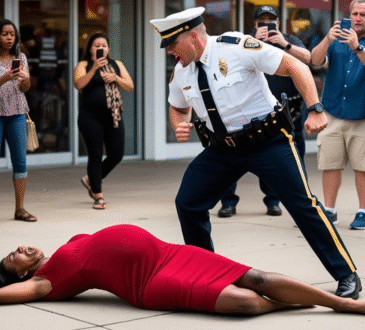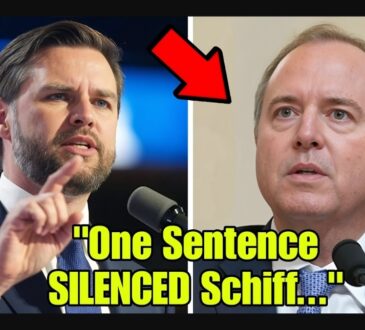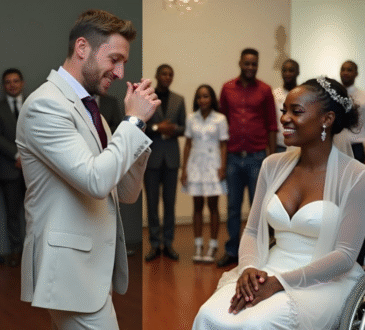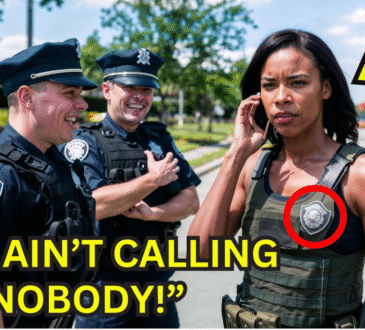Dad Visits His Daughter in the Morgue to Say Goodbye, Then Something Astonishing Happened
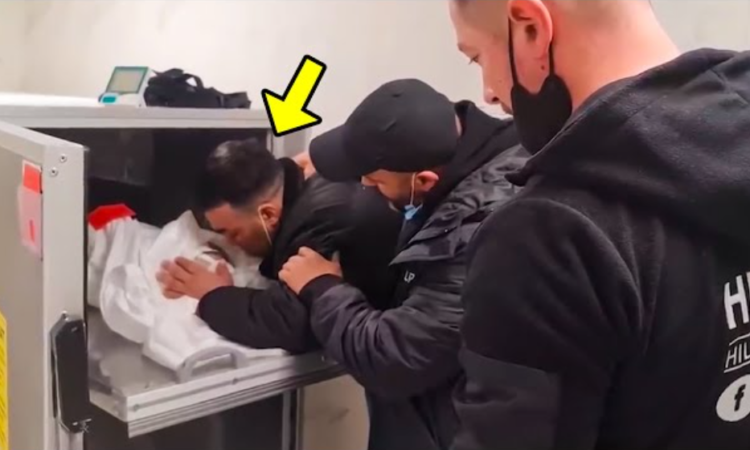
“When a dad receives the tragic news that his daughter has passed away, he rushes to the morgue to say his last goodbye. But then he notices something shocking, and what follows next is nothing short of astonishing. Howard’s phone buzzed loudly in his pocket; the number was unknown. “Hello,” he answered. The voice on the other side confirmed that he was Mr. Howard Bennett. Then the person introduced himself as Officer Martinez of the Los Angeles Police Department. He apologized as the bearer of bad news, due and told Howard that there had been an accident; it involved his daughter Constance.
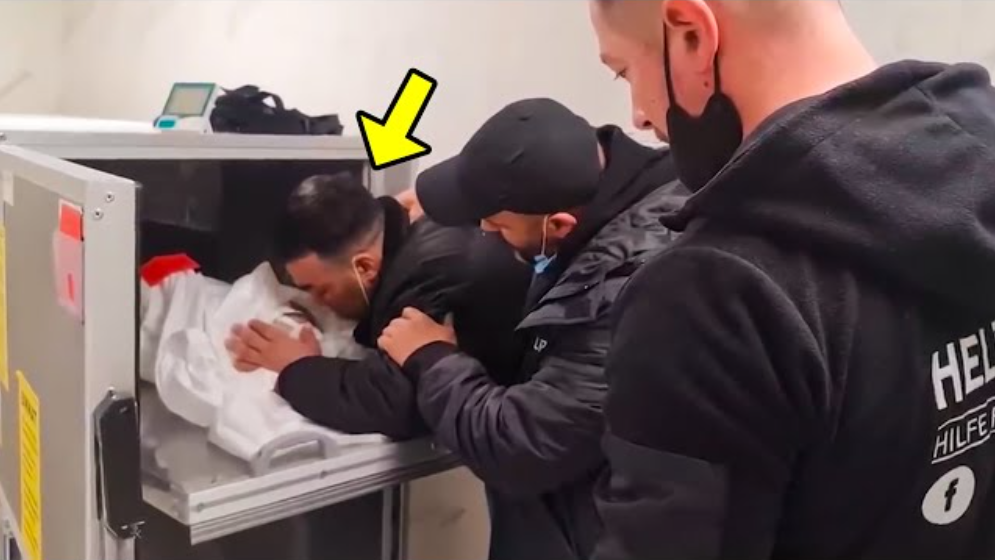
At that moment, the world disappeared beneath Howard’s feet. “Is she…how is she?” he asked. Raw fear had him by the scruff of his neck. He clutched the phone tighter, as if that would somehow help him to hold on to Constance too. A pause followed; the silence said more than words ever could. Again, the police officer apologized, and then he told them Constance didn’t survive the collision. They needed him to come to the West Los Angeles Hospital as soon as he could.
The drive over was a blur; red and green lights drifted past as Howard navigated the familiar streets in a haze. In the hospital, a grim-faced nurse greeted him. “I need to see her,” Howard said. His throat was thick, and the words came out in a whisper. The nurse nodded; she dealt with these situations often. The best way was to simply do as the bereaved asked and interfere as little as possible.
She led him down two more passages and then through a set of swing doors. The room was cold; she was on the table, serene still. The sight was so jarring Howard’s knees buckled. He walked slowly over to the table; tears stung his eyes. She was once a bundle of uncontained energy; now she was silent and pale. “I’m so sorry, Constance,” he whispered. He reached out to touch her; his hands shook uncontrollably. “Daddy’s here now,” the words came out as a choked sob. He felt like he hadn’t been there when she needed him the most.
For a while, Howard stood beside Constance’s still body. He was utterly alone in the chill of the morgue; the only sound in the oppressive silence was his uneven breathing. He kept speaking to her, telling her how much he loved her and what he loved most about her. His heartbreak was unfathomable.
While he spoke, Howard thought he saw a faint movement; it was her hand. It was resting beside her, but there was an irregular tremble in one of her fingers. Howard froze; was this just a part of rigor mortis setting in, or was there still life in Constance? He couldn’t tear his eyes away from that one finger. He continued speaking to her, and then there it was again, this time the tremor was slightly stronger, deliberate even. Howard’s heart skipped a beat, and his stomach felt as if he had just stepped off a roller coaster. “Constance,” he said, his voice hope and disbelief existing side by side.
His rational mind declared war on his raw emotions; this was impossible, it said. Yet Howard couldn’t deny what he had seen twice. He swallowed hard, then he pressed the call button beside the morgue door. Rapid footsteps approached; the nurse flew through the doors. Before she could say anything, Howard blurted out, “I saw her hand move twice.”
The nurse had learned to put on a poker face; it was part of dealing with bereaved people. But this was new for her; someone declared dead and then a relative sees a movement, unheard of. So instead of being deadpan, her face pulled into a skeptical expression. She checked Constance’s vitals; Howard watched and held his breath, searching his daughter’s face for any sign of life. Then the nurse staggered back; there was a pulse. It was weak, but it was there; her eyes widened. She grabbed the phone and called for assistance. Howard couldn’t move around them; medical personnel flooded into the room. They were swift, efficient, and well-coordinated.
Against all odds, the daughter he thought he’d lost was alive. Then came the news that made him want to dance. A stern-faced woman with sharp eyes and a bun on her head pulled him aside. Deadpan, she said, “Mr. Bennett, there’s been a terrible mistake. Your daughter is not dead.” She explained that Constance was in a deep coma but that the specialists would have to confirm that there was a heartbeat. It was faint, but it was regular. Relief came first; then Howard cried uncontrollably for a few minutes. Then he regained control; anger surged like a volcano inside of him.
“How could this happen?” he demanded. His emotions were out of control now; over and over, he shouted, asking how they could possibly have made such a mistake. The doctors’ faces remained impassive; they explained there was a mix-up with the paperwork from the accident scene, but nothing more. Getting information was like pulling teeth.
Howard spent the weeks that followed at Constance’s bedside; she remained unresponsive but very much alive. During his long night vigils, he befriended a young nurse who mostly worked the late shift; she was always around with a kind word and a cup of tea when he needed it. So it was only fitting that she be the one to clandestinely break the news to him, and it was news the hospital didn’t ever want to see the light
This wasn’t the first unusual case of this kind in the hospital; it had been before: misdiagnosis, wrong treatments, and living people being declared dead. The pressure built in Howard, but he kept it off his face. He thanked the nurse, and then he decided to let hell rain down on those responsible. He had access to his daughter’s medical record; so that’s where he started. The next morning, he spoke to staff and contacted other families that had been affected by the hospital’s lack of care.
He made copies of Constance’s medical files and took those home with him. Someone was going to pay for this mistake, and it was going to be expensive. Howard noticed a disturbing pattern of negligence at the hospital, and all of it seemed to lead back to one physician: Dr. Thompson. While talking to lawyers, requesting and fighting for further records, and using the trust he had built in the hospital as the foundation for off-the-record conversations with the staff, he uncovered the trail of malpractice lawsuits.
Most of these were settled discreetly out of court; three of the cases were eerily similar to Constance’s. To Howard, it was clear that Dr. Thompson should never be allowed close to another patient; he endangered lives and had been doing so for years. Yet the hospital continued to employ him regardless of the lawsuits and the patient complaints. Howard was angry and determined; he wanted justice and presented his findings to the hospital board in an attempt to get them to accept accountability.
The meetings were tense; hospital lawyers downplayed the severity of the situation, but Howard was relentless. This was not about a series of unfortunate errors; it was about the hospital’s systematic failure to protect patients. Then, under added pressure from his own attorneys, the truth began to unravel. More damning evidence against
Dr. Thompson started surfacing, and the hospital doubled their attempts to crush his efforts. He started receiving threatening phone calls; he had to stop digging or face the consequences. It was all completely out of place, he thought. For heaven’s sake, this was a hospital, not the mob.
He pressed on despite the harassment. The next night, his tires were slashed in his driveway. When it seemed that he had hit a dead end, he called a press conference. Howard planned to reveal everything he knew to the public; let them be the final judge; let them apply the pressure. Clearly, the hospital wasn’t eager to listen to his voice alone. But then, an hour before he was scheduled to speak, he received a chilling message: it was a picture of Constance in her hospital bed.
From the first moment he’d become aware of the fatal flaws at the hospital, Howard had tried to have Constance moved to another facility. He brought his own specialists to motivate the transfer, but all the doctors agreed she was too weak to survive a move. Now, perhaps a few months down the line, and now Constance’s safety was on the line.
Howard pressed ahead with the press conference anyway. What were they going to do, kill his daughter? With the eyes of the country on them, he didn’t think so. A day later, he was summoned for a closed-door meeting with the hospital’s board of directors. He walked into a room full of cold faces; the board laid out their terms. They would settle for a huge amount, enough to ensure Constance’s future, in exchange Howard would have to retract his allegations and cease what they called harassment of the hospital and its staff.
Howard stared at them in disbelief; this was a healing facility, one would have to imagine they would be the first to acknowledge life-threatening mistakes and then throw everything at preventing them in the future. Instead, the board was trying to keep the facility’s image squeaky clean while protecting the guilty parties. This was a bridge too far for him; the easy choice would have been to take the money and to end the nightmare. But then he thought of the other families, the pain and the suffering they had gone through, and the probability that this would happen again and again until someone put a definitive stop to it. And he knew he couldn’t stay silent.
So he declined the offer and told them this was not only about him and Constance; it was about every patient that had ever been placed at risk because of the hospital’s dubious practices. The board was uneasy; they had underestimated Howard. He was not only a concerned father; he had turned into the thing they hated most: an activist citizen.
Howard left, but at the door, he turned around and told them he was committed to fighting this right until the end, regardless of the personal cost. Over the weeks, Howard’s fight intensified. He interviewed people who had suffered as a result of the hospital’s negligence and recorded the interviews; all of these went directly to his team of attorneys. They would pull the trigger on possible criminal complaints as soon as the time was right.
At the same time, Constance’s condition started to improve, and then she started emerging from her coma. It took a couple of days, but her improvement was steady, and her consciousness was returning in leaps and bounds. Howard had succeeded in bringing in his own neurological team to care for Constance, and he met with them two days after she began to surface. Nothing could have prepared him for the news they were about to share.
Dr. Patel, a ratton man with John Lennon eyeglasses, was the team leader. He told Howard that they had discovered an underlying condition in Constance: it was a rare form of aneurysm that had gone undetected. Again, dread curled in the pit of Howard’s stomach. If they hadn’t discovered it now, Dr. Patel told him, the condition would have been fatal within a year, possibly even sooner. It was remarkable that the impact from the accident didn’t rupture the aneurysm; instead, it had simply shifted it to a more detectable location in the brain.
The most important news was it was treatable now that they had discovered it. With that news, a seismic shift happened in Howard’s world. The past months had been epitomized by obstacles, investigations, and verbal fights with the hospital’s management, but now it felt as if the accident actually happened to save Constance’s life. That was huge.
While he was still trying to recover from the news, Howard’s phone buzzed. It was his attorney; they were ready to present their case. But they had a suggestion: they wanted to prevent the hospital from circling the wagons. The case was technical, and if they didn’t win outright, their attempts to get the medical facility to mend its ways would turn into a protracted legal battle. They wanted to present the case to the board and hand over a list of demands. This was the only way everybody could win. If Howard agreed, the lawyers would handle everything.
It took him less than a minute to decide. In the light of the miracle that had just happened, his daughter in the process of waking up and having discovered a hidden life-threatening condition in time to treat it, it seemed wrong to pursue revenge. So he agreed. Two weeks later, Dr. Thompson was on suspension and facing legal repercussions; hearings would determine if his license would be revoked.
The hospital had put in place a rigorous review of the practices and their employment procedures, and Howard’s attorneys were appointed as an independent party to oversee everything. Howard rejoiced at the news, but his day wasn’t over yet. Behind him, Constance coughed; he looked at her as her eyes opened. They were clear for the first time; she saw him and smiled weakly. She was back, he thought. After everything, he had Constance back. What a great ending.

